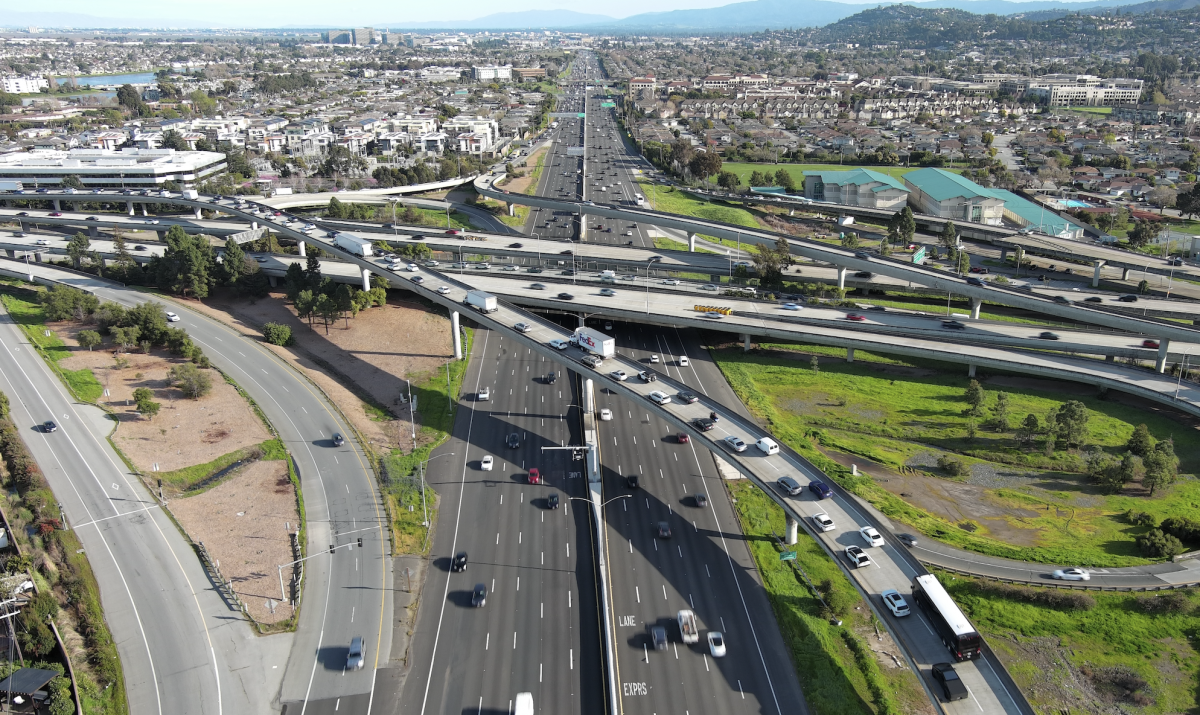
The San Mateo County Transportation Authority (TA), along with Caltrans and C/CAG, is evaluating a potential project to build ramps between State Route 92 and the US 101 Express Lanes.
Today, no such connection exists — drivers must exit the express lanes and merge across multiple lanes to transfer to SR 92 or vice versa. This adds to congestion, increases the risk of collisions and slows down trips. Congestion around the interchange also results in drivers cutting through local streets to avoid the slowdowns on the freeways.
The proposed project aims to address this issue. The goal is to make driving between highways 101 and 92 smoother and easier and make carpooling more attractive for people traveling between San Mateo County and the East Bay — particularly those heading to or from the San Mateo-Hayward Bridge.
Opinions on the Project
Supporters say the project could relieve a major bottleneck, reduce cut-through traffic and improve access for San Mateo and Foster City, and make trips more predictable for commuters, buses and shuttles. Cut-through traffic happens when drivers exit the freeway one exit earlier or later than the interchange and take local streets such as Hillsdale Boulevard and J Hart Clinton Drive to get back on the freeway to avoid the delay. They also point out that express lanes can help manage traffic and, when paired with equity programs, can make many transportation services more beneficial to low-income drivers.
Concerns include the potential scale of construction, noise and uncertainty about whether properties near the freeway might be affected. Some have also raised the issue of induced demand — the idea that building new highway capacity may lead to more people driving, ultimately reducing the long-term effectiveness of the project.
Planning Takes Time — and That’s a Good Thing
The project is in the planning and environmental phase. The team has not made any decisions yet and continues to study multiple alternatives — including a no-build option. See the various options on our project page.
Large infrastructure projects require careful, transparent planning. It’s our job to ask tough questions, study alternatives, and clearly explain the benefits and trade-offs of each option — including whether the project should be built at all.
While we understand that the process can feel slow or unclear, our commitment is to be honest, thorough, and responsive to community questions. Evaluating possible impacts — including whether land might be needed — is part of our responsibility. But that evaluation does not mean the project is moving forward. In fact, it’s how we make informed decisions about whether it should.
Clearing Up Some Confusion
We’ve heard your questions. Here are some important facts we want to clarify:
- No houses or parks would be taken. None of the alternatives require the purchase of any residential buildings or public park space.
- One alternative (Alternative 3) stays entirely within Caltrans’ existing right-of-way. This option avoids the need for any additional property outside the existing highway footprint.
- The project will not affect the 19th Avenue/Fashion Island Boulevard Multimodal Improvement Project.
- If a connector is built, it would operate as an express lane. This would ensure seamless travel to and from the existing express lanes on US 101.
- The Express Lanes equity program is active. Qualifying San Mateo County residents receive a $200 annual credit for either a FasTrak transponder or a Clipper card to ensure everyone can benefit.
- If the project increases driving, state law requires it be offset. This could include funding for affordable housing, transbay transit service, complete streets improvements, or other projects that reduce driving.
What We’re Still Studying
Some questions can only be answered as the environmental analysis moves forward:
- Whether residential backyards, utilities or easements behind some houses on the west side of Norton Street might be affected.
- Whether soundwalls along the freeway would need to be raised — and how that change could impact nearby residents.
- Whether the connector would meaningfully improve traffic conditions and reduce cut-through driving.
- Whether Caltrans might require safety-related design changes.
- The full environmental impact of each alternative, including the no-build option.
Staying Informed
Moving forward, we’re committed to clearer, more frequent updates — even when there’s no major news to share.
You can expect monthly updates, continued community engagement and open dialogue. We want to earn and maintain your trust by sharing what we know, what we’re still learning and how we’re weighing every factor before making any decisions.
Stay up-to-date and join our mailing list by emailing: 101-92DC@smcta.org